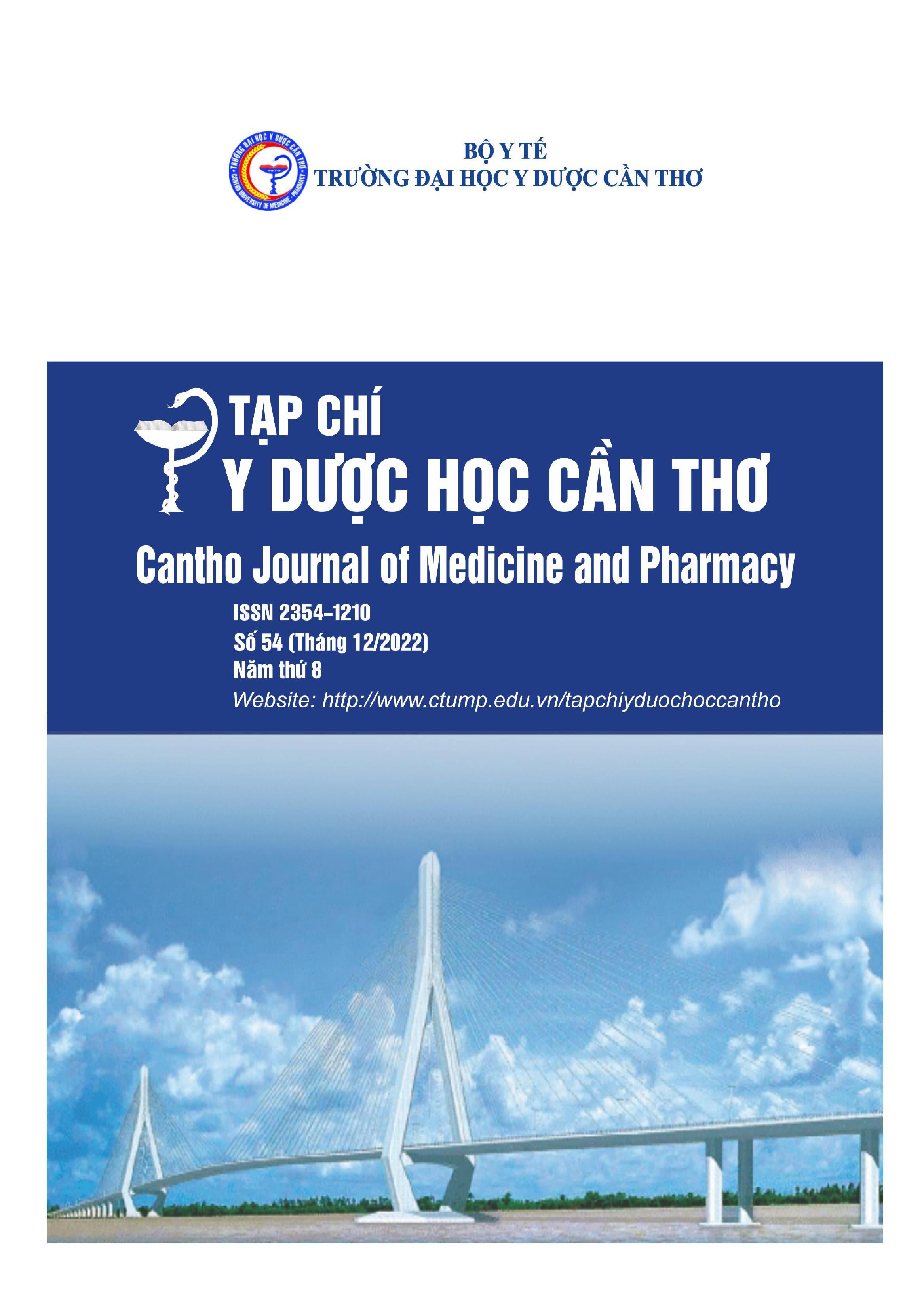CHARACTERISTICS SURVEY ON BLUNT ABDOMINAL TRAUMA AT CAN THO CHILDREN’S HOSPITAL IN 2020-2021
Main Article Content
Abstract
Background: Blunt abdominal trauma is the leading cause of trauma bringing children to the clinic and hospital. Objectives: Described general characteristics, clinical and subclinical characteristics, and related to blunt abdominal trauma hospitalized at Can Tho Children’s Hospital in 2020-2021. Materials and methods: Retrospective study on 42 pediatric patients diagnosed with blunt abdominal trauma at Can Tho Children’s Hospital. Results: Mean age was: 9.41 years old. The common age group is 6-12 years old (52.4%). The ratio of sex is approximately 1:1. The most common cause of hospitalization was traffic accidents. Clinically: the rate of shock on admission is 9.5%. The most significant was abdominal pain (73.8%). The main symptom was localized/widespread abdominal pain (70%). The majority of combined injuries were orthopedic injuries. On subclinical: the most detected ultrasound image was liver injury (26%). Abdominal CT scan revealed abdominal fluid (45%), liver injury (33%), and spleen injury (11%). Conclusions: The common feature in blunt abdominal trauma was the age group of 6-12, the mean age was: 9.41 years old, the ratio of sex was approximately 1:1, and traffic accidents were the main cause. Clinical and subclinical symptoms were quite diverse, but the main manifestations were abdominal pain, and liver and spleen damage.
Article Details
Keywords
lunt abdominal trauma, general characteristics, clinical, subclinical
References
2. Trần Hiếu Học, Quách Văn Kiên và Trần Quế Sơn (2020), Bài giảng bệnh học ngoại khoa, Nhà xuất bản Y học, trang 38-50.
3. Tạ Văn Trầm và Trần Hoàng Ân (2016), Đặc điểm tổn thương chấn thương bụng kín tại bệnh viện Đa khoa Trung Tâm Tiền Giang. Tạp chí Y học thành phố Hồ Chí Minh, tập số 2, trang 360-363.
4. Adriana Echavarria Medinaa, Carlos Hernando Morales Urib and et al. (2017), Associated factors to non-operative management failure of hepatic and splenic lesions secondary to blunt abdominal trauma in children. Rev Chil Pediatr, 88, pp.470-477.
5. Dileep Garg, Aditya P Singh and et al. (2019), An epidemiological study of abdominal blunt trauma in pediatric population. Department of Pediatric Surgery, 32, pp.1090-1093.
6. E A Ameh, L B Chirdan and et al. (2000), Pediatric Surgery International, volume 17, No 2, pp.505-509.
7. Hardik J. Solanki, Himanshu R. Patel and et al. (2018), Blunt abdomen trauma: a study of 50 cases, International Surgery Journal, volume 5, No 5, pp.1763-1769.
8. J Amuthan, A Vijay and et al. (2017), A Clinical Study of Blunt Injury Abdomen in a Tertiary Care Hospital. International Journal of Scientific Stud, 5, pp.1-2.
9. Kumar Abdul Rashid and Zaffer Saleem Khanday. (2018), Diagnosis and Management of Blunt Abdominal Trauma in Children: Experience from a Newly Established Facility, New Indian Journal of Surgery, volume 94, No 3, pp.474-478.
10. Sampoth E, Yukimato A. (2019), National Vital Statistics System, National Center for Health Statistics. 10 Leading causes of death by age group, 49, pp.131-135.
11. Roy Spijkerman, Naoki Hashizume, et al. (2021), Management of pediatric blunt abdominal trauma in a Dutch level one trauma center, European Journal of Trauma and Emergency Surgery, volume 47, No 2, pp.1543–1551.
12. Tobias Retzlaff , Wolfgang Hirsch, et al. (2010), Is sonography reliable for the diagnosis of pediatric blunt abdominal trauma, Journal of Pediatric Surgery, volume 45, No 4, pp.912-915.
13. Tomohiro K., et al .(2020), The management and outcome of pediatric blunt chest-abdominal injuries, Pediatrics International, volume 8, No 3, pp.1-6.
14. WHO. (2001), The world health report. World Health Organization. Journal Geneva, 22, pp.28.


